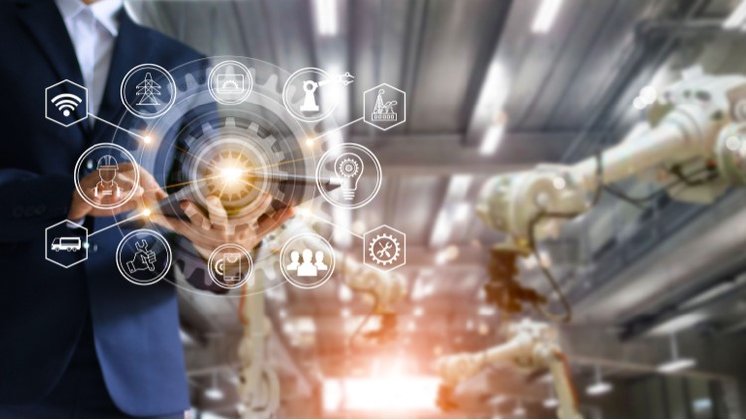Screws that communicate with assembly robots, forklifts that store goods on high shelves, intelligent machines that independently coordinate production processes. The fourth industrial revolution: everything is intelligently networked, people, machines and products.
But it's not just the globe that keeps turning. Industry 4.0 is standardized in many industries and companies, but now the biological part is being added. Industry 5.0! A collaboration between robots and humans.
For the automation of production processes to develop its full potential, human creativity is necessary. Automated production with conventional industrial robots alone will only ever do bluntly what is prescribed in long and tedious programming. Collaborating robots, on the other hand, work flexibly and directly with employees. This gives production a new dynamic and releases new potential: While the robot can take over standard processes, the human being is involved in other value-adding activities. The employee is relieved, because he uses the robot - the so-called Cobot - as a multifunctional tool: such as a screwdriver, or packaging machine, or palletizer, etc.. The robot cannot replace human labour, but it can supplement it by performing strenuous or routine or even dangerous tasks. And employees use their creativity for more complex tasks, because that's where it's needed.
Artificial intelligence also plays a more demanding role in Industry 5.0: it does not only perform its tasks within the structures assigned to it. Rather, it develops its own solutions through lateral-thinking, independent analyses and also organizes them directly. In this way, employees save time because they can immediately continue working with concrete results.
Conclusion:
The next industrial revolution rather seems to be a relationship of man and machine. Both seem to collaborate hand in hand. Whereas one side has a rather defined area of work that must be programmed, the other (human) side will benefit from those results and can perform more efficiently. Sometimes, it is just not easy to find the fitting partner. Is the software smart enough to support the person and to cover all boring tasks? Or is the human being flexible and intelligent enough to really find strategic opportunities with Robot’s results? Even if this can be confirmed, the person must be eloquent and versatile to properly communicate the results and to remain a team-player.
Author:
Martin Krill has been working for Hager Unternehmensberatung for nearly 20 years and was appointed Managing Director in 2004. He fills senior sales and management positions in the technology industry and in other selected industries.

